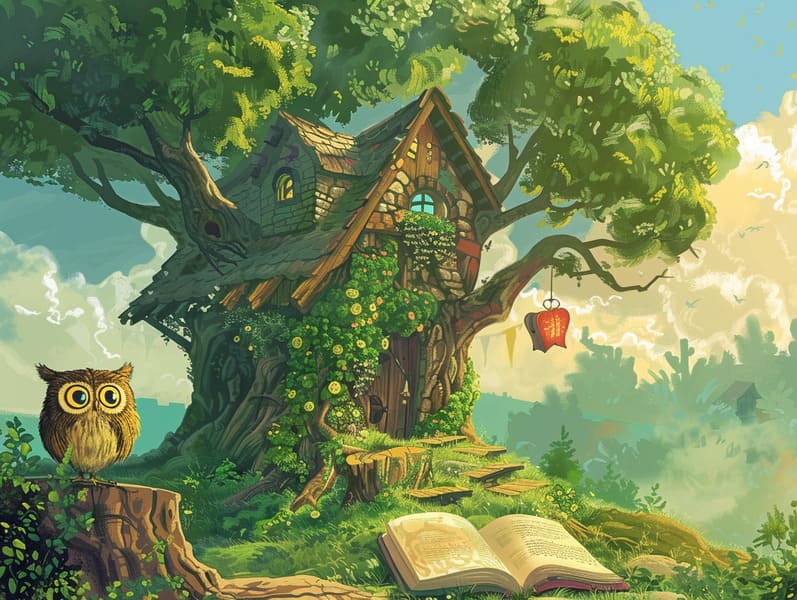Tracing the Heritage of Bedtime Fairy Tales and Its Unending Fascination.
Tracing the Heritage of Bedtime Fairy Tales and Its Unending Fascination.
Blog Article

Best fairy tales have long histories. These tales have been transmitted from one generation to the next millennia before they were ever put on paper. They were born from a variety of cultures, including Indigenous traditions. They were initially transmitted among elders, often carrying themes and messages relevant to the societal norms and beliefs of the time.
Jacob and Wilhelm Grimm, Jacob and Wilhelm (the Grimm brothers), were among the first to assemble many of these beloved fairy tales. Their compilation, "Grimm's Fairy Tales," included tales like "Cinder Maid," "The Story of Hansel and Gretel," and "Little Snow White," which have since become essentials in the world of iconic fairy tales. Similarly, Hans Andersen's fantastical stories, such as "The Story of the Little Mermaid," and "The Story of the Ugly Duckling," have gained the love worldwide, solidifying their place in the pantheon of timeless fairy tales.
Despite their age, fairy tales remain as relevant as ever, especially as nighttime stories for kids. These magical stories are now available in diverse formats, including vividly illustrated books, delightful animations, and digital storybooks.
Their ongoing significance can be linked to several charming aspects:
Life Lessons: Traditional fairy tales often illustrate important moral lessons. Stories like "The Shepherd Boy and the Wolf" teach the merit of sincerity, while "The Tortoise and the Hare" highlight the values of resolve and meekness. These tales offer young ones clear distinctions between truth and falsehood, forming their moral compass in a kind yet meaningful way.
Warmth and Understanding: Fairy tales frequently include heroes facing difficulties and adversities, inciting young readers to understand with their struggles and back their triumphs. For instance, "Beauty and the Beast" teaches us the necessity of seeing beyond looks to know the true nature of a person, encouraging tenderness and appreciation.
Cultural Perception: Many fairy tales are interwoven with the cultural contexts from which they were born. Exploring these tales can provide illuminating insights into different societies, nurturing a sense of world awareness and comprehension.
Imagination and Innovation: The fantasy-filled elements in classic fairy tales—enchanted objects—foster children’s innovative ideas. These tales move readers to enchanted realms, unleashing inventive dreams and a sense of fascination that persists a lifetime.
Traditional fairy tales are not only charming but also didactic. They provide alluring tools in advancing various mind and heart abilities in little ones. When timeless fairy tales are voiced, they strengthen language proficiency by teaching new language and complicated sentence structures. This practice also nurtures auditory skills and mindfulness, as little ones pay close attention, check here ready to see what happens next.
Furthermore, debating the themes and characters of fairy tales can foster thought processes and cognitive skills. Kids are educated to recognize patterns, guess what will happen, and know cause and effect. These conversations also promote little ones voice their thoughts and feelings, contributing to their emotional intelligence.
In today’s digital age, the availability of internet fairy tales has made these fairy tales more acquirable than ever. Websites and apps extend broad selections of popular fairy tales that can be accessed or listened on anytime, anywhere. Fairy tales read out loud are particularly prevalent, offering an delightful method for kids to be a part of these enchanting tales. Spoken stories and read-out-loud videos move characters and settings to life, often joined by delightful musical scores and songs that heighten the narrative experience.
The unending appeal of timeless fairy tales lies in their ability to shift to new eras while sustaining their key morals. Contemporary takes of these fairy tales often include more different characters and modern settings, making them pertinent to today’s audience. However, the basic principles of fearlessness, humanity, and integrity remain unchanged, continuing to appeal to readers of all ages.
Classic fairy tales also offer a sense of reassurance and comprehensibility. They provide a tidy narrative with a clear beginning, middle, and end, often concluding with the solving of conflicts and the triumph of truth over falsehood. This predictability can be heartening for the young, gifting a sense of steadfastness in an variable world.
Traditional fairy tales continue to captivate and enlighten new generations, maintaining their magic and applicability in modern society. As bedtime stories for kids, they deliver a perfect blend of magic and knowledge, sustaining moral values, empathy, and creativity. The accessibility of digital fairy tales and the in demand status of fairy tales voiced make sure that these timeless fairy tales remain acquirable to new generations.
By preserving and sharing these stories, we continue to honor the rich tapestry of folklore and cultural heritage. Whether you are enjoying a gorgeously illustrated book, delving into a digital library, or hearing an voice book, the grace of timeless fairy tales is always within reach. These narratives point out of the consistent influence of stories and its ability to tie us across eras and regions.
No matter if you are experiencing a colorful picture book, accessing a cyber library, or playing an read-aloud book, the delight of classic fairy tales is always within reach.
These stories teach us of the consistent nature of storytelling and its ability to link us across eras and regions, establishing a link that charms and informs alike.